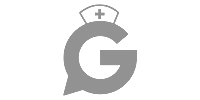Preparing for the NCLEX exam can be a daunting task, especially when it comes to understanding complex conditions like pulmonary hypertension. This article aims to provide a comprehensive and detailed overview of pulmonary hypertension, including its pathophysiology, clinical manifestations, diagnostic methods, treatment options, and nursing considerations. As a bonus, we will also include a mnemonic to help you remember key points about hypertension.
💡 Ultimate NCLEX Study Mega Guide
Your must‑have resource to NCLEX cheat sheets, mnemonics & key topics — all in one place.
What is Pulmonary Hypertension?
Pulmonary hypertension (PH) is a condition characterized by elevated blood pressure in the pulmonary arteries, which carry blood from the heart to the lungs. This increased pressure can lead to various complications, including right-sided heart failure. PH is classified into five groups based on its underlying causes:
- Group 1: Pulmonary Arterial Hypertension (PAH)
- Group 2: PH due to Left Heart Disease
- Group 3: PH due to Lung Diseases and/or Hypoxia
- Group 4: Chronic Thromboembolic Pulmonary Hypertension (CTEPH)
- Group 5: PH with Unclear Multifactorial Mechanisms
Pathophysiology
The pathophysiology of pulmonary hypertension involves several mechanisms:
- Vasoconstriction: Narrowing of the pulmonary arteries.
- Vascular Remodeling: Structural changes in the pulmonary artery walls.
- Thrombosis: Formation of blood clots within the pulmonary arteries.
- Inflammation: Inflammatory processes contributing to vascular changes.
These mechanisms lead to increased pulmonary vascular resistance, which in turn elevates the pressure within the pulmonary arteries.
Clinical Manifestations
The symptoms of pulmonary hypertension can be nonspecific and may include:
- Dyspnea: Shortness of breath, especially during exertion.
- Fatigue: Generalized tiredness and weakness.
- Chest Pain: Discomfort or pain in the chest.
- Syncope: Episodes of fainting or dizziness.
- Edema: Swelling in the ankles, legs, or abdomen.
- Cyanosis: Bluish discoloration of the lips and skin due to low oxygen levels.
Diagnostic Methods
Diagnosing pulmonary hypertension involves a combination of clinical evaluation, imaging studies, and hemodynamic measurements:
- Echocardiography: An ultrasound of the heart to assess the right ventricle and estimate pulmonary artery pressure.
- Right Heart Catheterization: A definitive test to measure pulmonary artery pressure directly.
- Chest X-ray: To visualize the size and shape of the heart and pulmonary arteries.
- Electrocardiogram (ECG): To detect right ventricular hypertrophy or strain.
- Pulmonary Function Tests (PFTs): To evaluate lung function.
- Blood Tests: To rule out other conditions and assess overall health.
Treatment Options
The treatment of pulmonary hypertension depends on its underlying cause and may include:
- Medications:
- Vasodilators: Such as prostacyclins, endothelin receptor antagonists, and phosphodiesterase-5 inhibitors.
- Anticoagulants: To prevent blood clots.
- Diuretics: To reduce fluid buildup.
- Oxygen Therapy: To maintain adequate oxygen levels.
- Lifestyle Modifications:
- Exercise: Tailored exercise programs to improve endurance.
- Diet: Low-sodium diet to manage fluid retention.
- Smoking Cessation: To improve overall lung health.
- Surgical Interventions:
- Atrial Septostomy: Creating a small hole between the atria to reduce pressure.
- Lung Transplant: In severe cases where other treatments are ineffective.
Nursing Considerations
Nurses play a crucial role in the management of patients with pulmonary hypertension. Key nursing considerations include:
- Monitoring: Regular assessment of vital signs, oxygen saturation, and symptoms.
- Education: Teaching patients about their condition, medications, and lifestyle changes.
- Support: Providing emotional support and resources for coping with chronic illness.
- Coordination: Collaborating with a multidisciplinary team to ensure comprehensive care.
Bonus: Mnemonic for Hypertension
To help you remember key points about hypertension, use the mnemonic "ABCDE":
- A: Adherence to medications and lifestyle changes.
- B: Blood pressure monitoring regularly.
- C: Choices in diet (low sodium, balanced nutrition).
- D: Daily exercise and physical activity.
- E: Education about the condition and its management.
Conclusion
Understanding pulmonary hypertension is essential for nursing students preparing for the NCLEX exam. This comprehensive guide covers the pathophysiology, clinical manifestations, diagnostic methods, treatment options, and nursing considerations for pulmonary hypertension. Additionally, the "ABCDE" mnemonic provides a handy tool for remembering key aspects of hypertension management. With thorough preparation and a solid grasp of these concepts, you'll be well-equipped to tackle questions related to pulmonary hypertension on the NCLEX exam. Happy studying!







